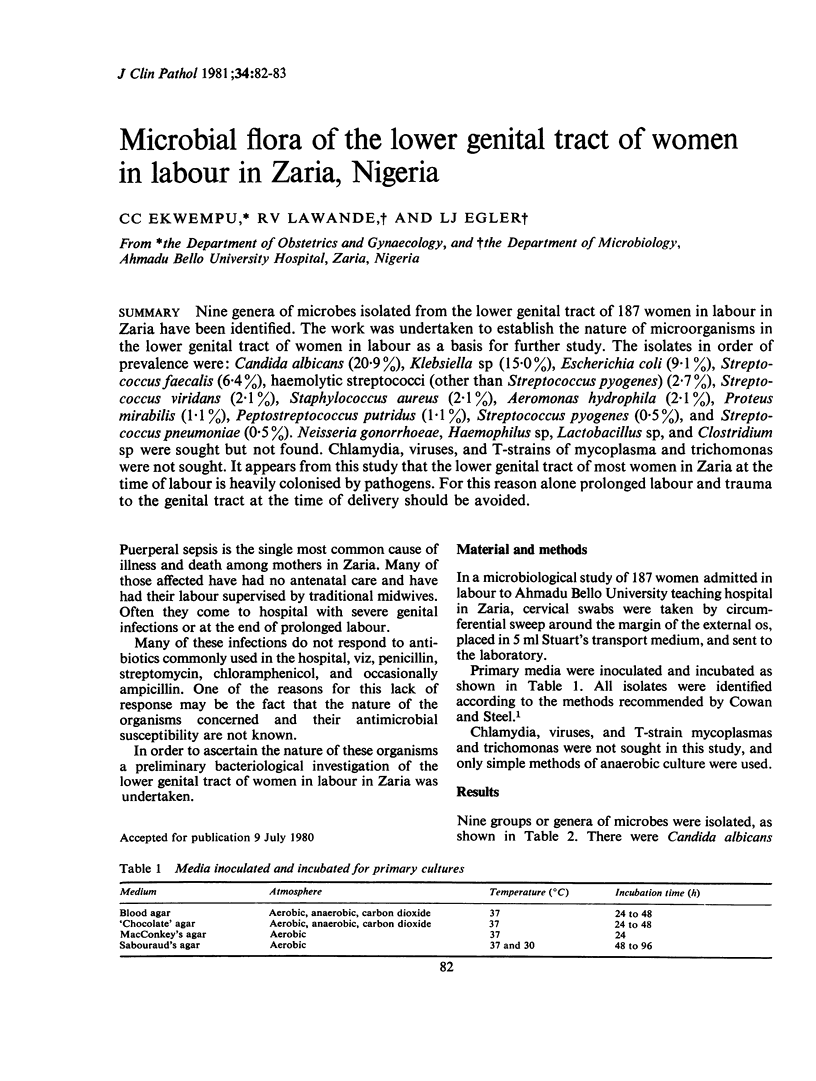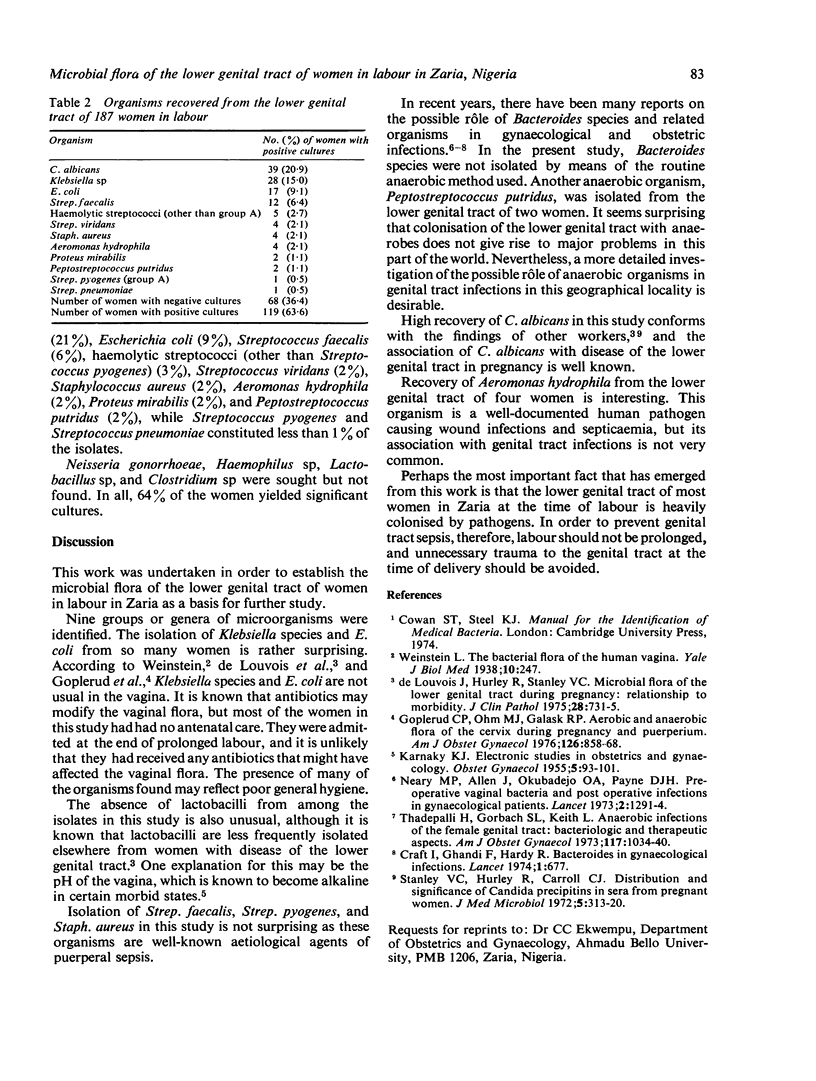Abstract
Nine genera of microbes isolated from the lower genital tract of 187 women in labour in Zaria have been identified. The work was undertaken to establish the nature of microorganisms in the lower genital tract of women in labour as a basis for further study. The isolates in order of prevalence were: Candida albicans (20.9%), Klebsiella sp (15.0%), Escherichia coli (9.1%), Streptococcus faecalis (6.4%), haemolytic streptococci (other than Streptococcus pyogenes (2.7%), Streptococcus viridans (2.1%), Staphylococcus aureus (2.1%), Aeromonas hydrophila (2.1%), Proteus mirabilis (1.1%), Peptostreptococcus putridus (1.1%), Streptococcus pyogenes (0.5%), and Streptococcus pneumoniae (0.5%). Neisseria gonorrhoeae, Haemophilus sp, Lactobacillus sp, and Clostridium sp were sought but not found. Chlamydia, viruses, and T-strains of mycoplasma and trichomonas were not sought. It appears from this study that the lower genital tract of most women in Zaria at the time of labour is heavily colonised by pathogens. For this reason alone prolonged labour and trauma to the genital tract at the time of delivery should be avoided.
Full text
PDF

Selected References
These references are in PubMed. This may not be the complete list of references from this article.
- Craft I., Ghandi F., Hardy R. Letter: Bacteroides in gynaecological infection. Lancet. 1974 Apr;1(7859):677–677. doi: 10.1016/s0140-6736(74)93226-7. [DOI] [PubMed] [Google Scholar]
- Goplerud C. P., Ohm M. J., Galask R. P. Aerobic and anaerobic flora of the cervix during pregnancy and the puerperium. Am J Obstet Gynecol. 1976 Dec 1;126(7):858–868. doi: 10.1016/0002-9378(76)90674-8. [DOI] [PubMed] [Google Scholar]
- KARNAKY K. J. Electronic studies in obstetrics and gynecology. Obstet Gynecol. 1955 Jan;5(1):93–101. [PubMed] [Google Scholar]
- Neary M. P., Allen J., Okubadejo O. A., Payne D. J. Preoperative vaginal bacteria and postoperative infections in gynaecological patients. Lancet. 1973 Dec 8;2(7841):1291–1294. doi: 10.1016/s0140-6736(73)92870-5. [DOI] [PubMed] [Google Scholar]
- Stanley V. C., Hurley R., Carroll C. J. Distribution and significance of candida precipitins in sera from pregnant women. J Med Microbiol. 1972 Aug;5(3):313–320. doi: 10.1099/00222615-5-3-313. [DOI] [PubMed] [Google Scholar]
- Thadepalli H., Gorbach S. L., Keith L. Anaerobic infections of the female genital tract: bacteriologic and therapeutic aspects. Am J Obstet Gynecol. 1973 Dec 15;117(8):1034–1040. doi: 10.1016/0002-9378(73)90750-3. [DOI] [PubMed] [Google Scholar]
- de Louvois J., Hurley R., Stanley V. C. Microbial flora of the lower genital tract during pregnancy: relationship to morbidity. J Clin Pathol. 1975 Sep;28(9):731–735. doi: 10.1136/jcp.28.9.731. [DOI] [PMC free article] [PubMed] [Google Scholar]


